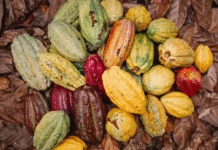
On March 29 2023, the Graduate School of Engineering, Osaka University, Shimadzu Corporation, Itoham Yonekyu Holdings, Toppan, and Sigmaxyz joined hands to establish a grouping which it termed ‘the future creation consortium for cultured meat.’
The consortium focuses on ‘concrete initiatives for the practical implementation of the manufacturing technology of edible cultured meat using 3D bioprinting.’
Through cross-company collaboration, the consortium will carry on ‘developing 3D bioprinting technology for application’, ‘establishing an integrated value chain from production to logistics’, and ‘contributing to legislation through collaboration with government offices and private companies.’ By exhibiting at the 2025 World Exposition in Osaka, Kansai, they will concentrate on ‘providing information that helps people understand cultured meat,’ aiming to realize the world’s first use of cultured meat.
The consortium consists of operating partners, who develop technologies, negotiate with government offices and related organizations, and provide information to the public; R&D partners, who engage in joint research in specific technology areas; and practical implementation partners, who dispatch information to make cultured meat-related technologies and products popular.
The operating partners are Osaka University, Shimadzu, Itoham Yonekyu, Toppan, and Sigmaxyz. For the positions of R&D partners and “practical implementation partners, applications will be invited from various fields.
The 3D bioprinting technology developed by Osaka University can freely produce muscle tissue structures and is expected to be used in the fields of food, regenerative medicine, and drug design. In August 2021, Osaka University and Toppan published a paper on a technology that produces different kinds of fibrous tissues, such as muscle, fat, and blood vessels using 3D printing and bundling up and integrating them.
After the technology was established, Osaka University, Shimadzu, and Sigmaxyz signed a partnership agreement for the practical implementation of 3D bioprinting technology in March 2022 and began working on its practical implementation. By receiving Itoham Yonekyu as a member, who has extended its knowledge about meat over the years, ‘the future creation consortium for cultured meat’ will further develop collaborations and accelerate technological development. Before the establishment of the consortium, Osaka University, Shimadzu, Itoham Yonekyu, Toppan, and Sigmaxyz signed an agreement for the practical implementation of cultured meat technology by 3D printing to build a system for the initiatives.
With the establishment of the consortium, Osaka University, Itoham Yonekyu, and Toppan opened a ‘Joint Research Laboratory for Social Implementation of Cultured Meat’ in Suita Campus, Osaka University. The joint research laboratory and Osaka University Shimadzu Omics Innovation Research Laboratories, which was established in December 2019, will serve as the center for research promotion of the consortium.
The five parties plan to co-sponsor the Osaka Healthcare Pavilion Nest for Reborn exhibited at the Osaka-Kansai Expo by Osaka Prefecture and Osaka City, and display an automated cultured meat production system. They will provide cultured meat produced by 3D bioprinting technology to visitors who wish to eat at the 2025 World Exposition in Osaka, Kansai, using the event as a place to communicate the initiatives of the consortium to the world.
Through the Osaka Expo, we will present the ideal form of cultured meat as one of the future foods, which will lower the burden on the environment and solve the global protein shortage. This will help people have a better understanding of what cultured meat is about. Through the initiatives of the consortium, the five parties will contribute to solving environmental and food problems, improving people’s health, and proposing future foods.
The Graduate School of Engineering, Osaka University, will look after development and promotion of 3D bioprinting technology. Shimadzu Corporation’s role is automation of 3D bioprinting technology; analysis and evaluation of taste and aroma of cultured meat produced by 3D bioprinting technology; promotion of peripheral technology development, such as analysis of culturing technology; development of a medium suitable for automated production; organization and maturation; and monitoring and feedback of culturing processes.
Itoham Yonekyu Holdings will take care of provision of meat cells that are to be the basis for high-quality cultured meat; repasting on and sensory analysis of cultured meat produced by 3D bioprinting technology; and promotion of peripheral technology development such as organization and maturation.
Toppan’s roles as an operating partner is optimization of muscle and fat fiber structure produced by 3D bioprinting cultured meat production technology; development of extracellular matrix materials (bioink and binding materials); and promotion of peripheral technology development that contributes to primary packaging, etc.
Sigmaxyz will be in charge of coordinating and managing companies and organizations that have peripheral technologies and know-how.
IndiFoodBev — authentic, impactful and influential
An English-language food and beverage processing and packaging industry B2B platform in print and web, IndiFoodBev is in its third year of publication. It is said that the Indian food and beverage industries represent approximately US$ 900 billion in revenues which implies more than 20% of the country’s GDP. Eliminating the wastage on the farmside can help to deliver more protein to a higher number of the population apart from generating sizable exports. The savings in soil, seeds, water, fertilizer, energy and ultimately food and nutrition could be the most immense contribution that country is poised to make to the moderation of climate change.
To improve your marketing and grow sales to the food and beverage processing and packaging industry, talk to us. Our research and consulting company IppStar [www.ippstar.org] can assess your potential and addressable markets in light of the competition. We can discuss marketing, communication, and sales strategies for market entry and growth.
Suppliers and service providers with a strategy and budget for targeted marketing can discuss using our hybrid print, web, video, and social media channels to create brand recognition linked to market relevance. Our technical writers are ready to meet you and your customers for content.
The second largest producer of fruit and vegetables in the world is continuously expanding processing capacities and delivery systems with appropriate innovative technologies. We cover product and consumer trends, nutrition, processing, research, equipment and packaging from farm to thali. Get our 2025 media kit and recalibrate your role in this dynamic market. Enhance your visibility and relevance to existing markets and turn potential customers into conversations. Ask for a sample copy of our bi-monthly in print or our weekly IndiFoodBev eZine each Wednesday.
For editorial info@ippgroup.in — for advertisement ads1@ippgroup.in and for subscriptions subscription@ippgroup.in
Naresh Khanna – 10 February 2025
Subscribe Now











